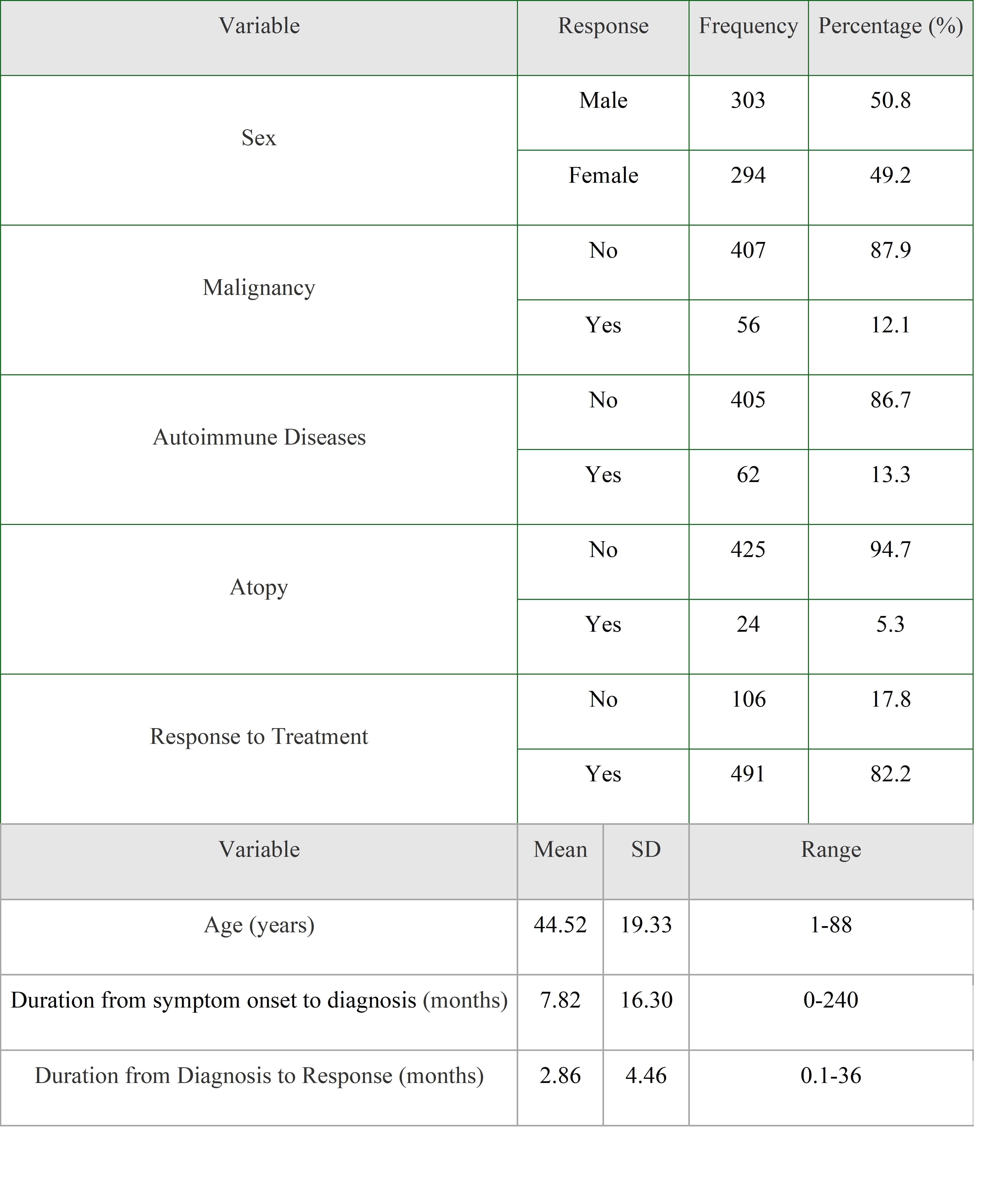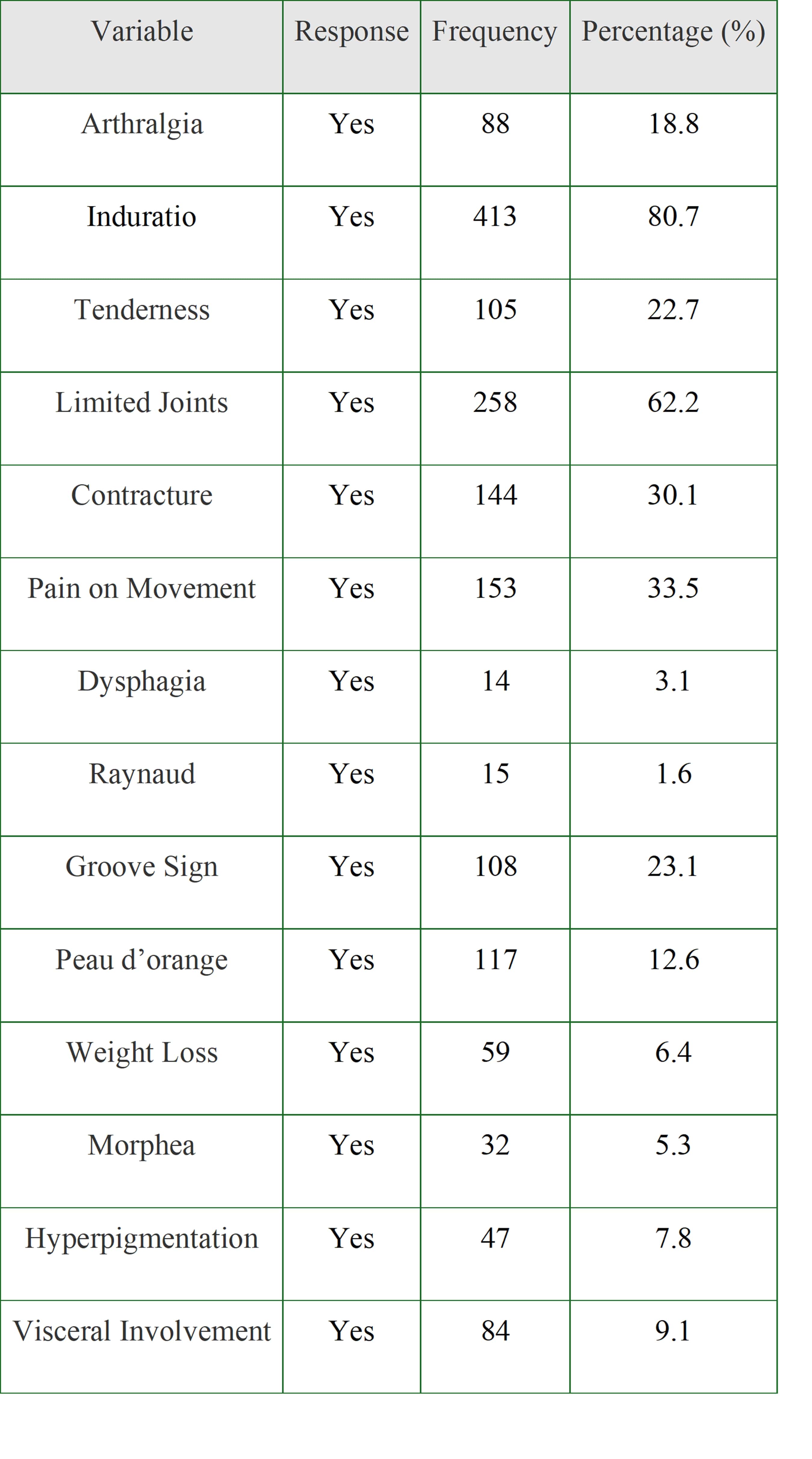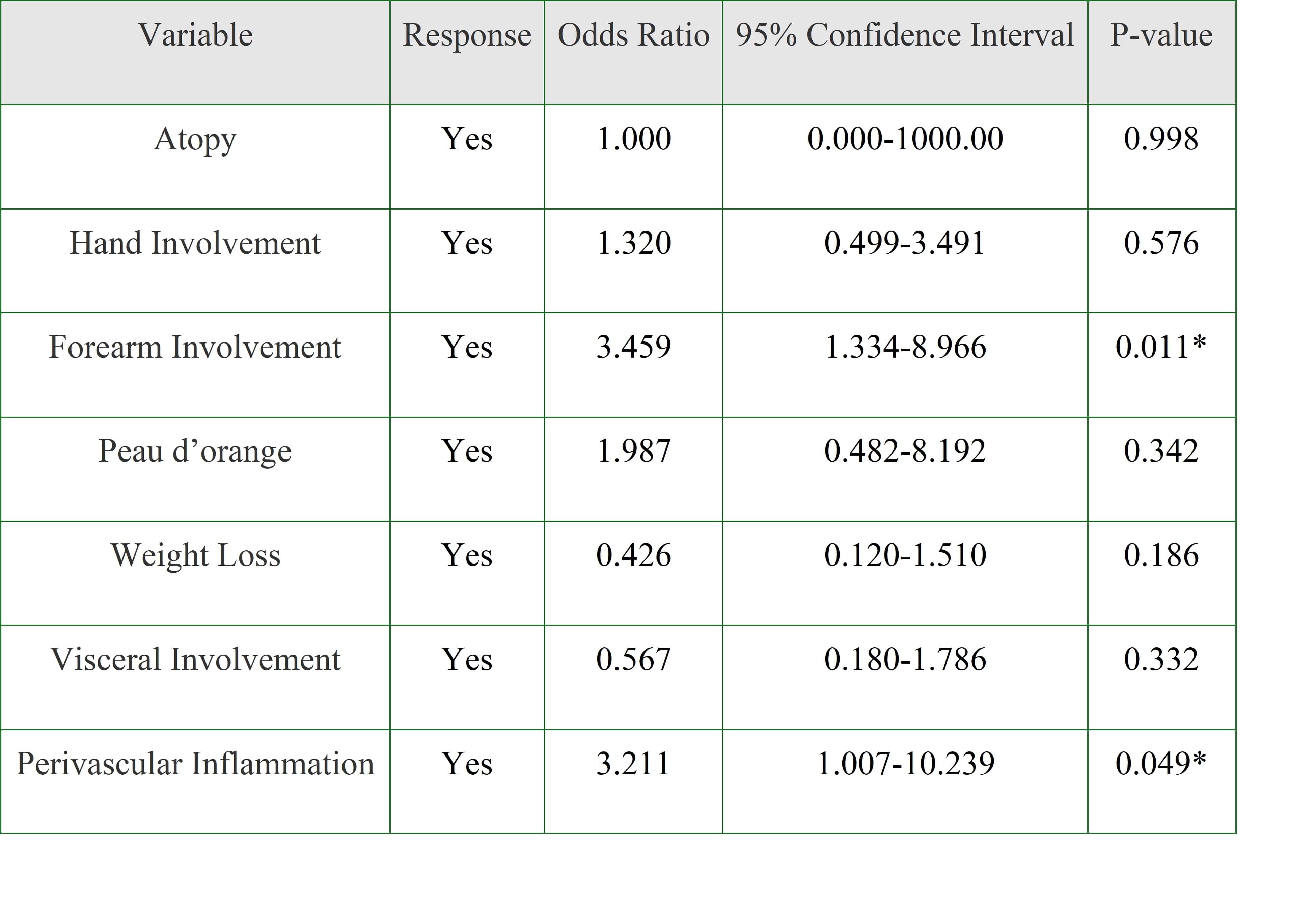Session Information
Session Type: Poster Session A
Session Time: 10:30AM-12:30PM
Background/Purpose: To date, data on the clinical features, diagnosis and the treatment of Eosinophilic Fasciitis (EF) patients are mostly derived from individual case reports, with no previous efforts to compile that data into a single whole. The present systematic review and meta-analysis aims to assess the characteristics of patients with EF, their clinical and laboratory findings, and factors associated with treatment response.
Methods: To identify all studies related to Eosinophilic Fasciitis; PubMed, CENTRAL, Web of Sciences, and Scopus were searched in July, 2023 without restrictions on publication year or language. The search terms included “Schulman syndrome” OR “Schulman’s disease” OR “Fasciitis with diffuse eosinophilia” OR “Eosinophilic fasciitis”. The studies were included if they involved patients with EF and reported demographics, clinical and laboratory features, outcomes, or factors associated with these outcomes. Inclusion covered case reports, case series, cross-sectional, case-control, and cohort studies reporting individual data of cases with new-onset eosinophilic fasciitis. Risk of bias was assessed by a modified Newcastle-Ottawa Scale.
Results: We analyzed 476 studies with an aggregate number of 597 patients. The mean age of the patients was 44.52 with 1:1 Male: Female ratio. The most common reported skin manifestation was induration (80.7%) with the most commonly affected body part being the legs (77.1%) followed by forearms (70.6%) and arms (60.0%). The characteristic “Groove sign” was reported in 23.1% of patients. Only 9.1% of patients had visceral involvement and only 1.6% reported Raynauds phenomenon. 90.2% had eosinophilia and 76.3% had high erythrocyte sedimentation rate. Hypergammaglobulinemia was reported in 65.9% of patients. The most common biopsy findings were fascial lymphocyte infiltration (81.5%) followed by eosinophilic infiltration (78.1%) and fascial thickening (66.1%).
The majority of patients (82.2%) exhibited clinical response to treatment. Atopy, hands and forearms involvement, peau d’orange, weight loss, visceral involvement and perivascular inflammation on biopsy were significantly higher among patients who responded to treatment. Patients who had forearm skin involvement (OR=3.459; 95%CI: 1.334-8.966) and patients who had perivascular inflammation on biopsy (OR=3.211; 95%CI: 1.007-10.239) had significantly higher odds of clinical response to treatment.
Regarding treatment outcome, we found that there was no significant difference in either the response rate (90.7% vs 89.8%, p = .86) or relapse rate (25.8% vs 20.8%, p = .35) between patients treated with a combination of methotrexate and glucocorticoids and patients who recieved glucocorticoid monotherapy respectively.
Conclusion: EF is a rare connective tissue disease affecting the skin and subcutaneous tissue. The diversity of its clinical features and the absence of a universally accepted treatment protocol pose significant hurdles. Our study provides the first comprehensive insight into EF patient’s characteristics, helping clinicians in imporving the clinical approach to those patients.
To cite this abstract in AMA style:
Hamdan O, Alshajrawi R, Mussa Q, Alajlouni Y, Dabbah Y, Fratekh R, Al-Mabrouk Y, Al-Mabrok S, A. Toubasi A. Characteristics and Factors Associated with Treatment Response Among Patients with Eosinophilic Fasciitis: A Systematic Review and Meta-analysis [abstract]. Arthritis Rheumatol. 2024; 76 (suppl 9). https://acrabstracts.org/abstract/characteristics-and-factors-associated-with-treatment-response-among-patients-with-eosinophilic-fasciitis-a-systematic-review-and-meta-analysis/. Accessed .« Back to ACR Convergence 2024
ACR Meeting Abstracts - https://acrabstracts.org/abstract/characteristics-and-factors-associated-with-treatment-response-among-patients-with-eosinophilic-fasciitis-a-systematic-review-and-meta-analysis/



